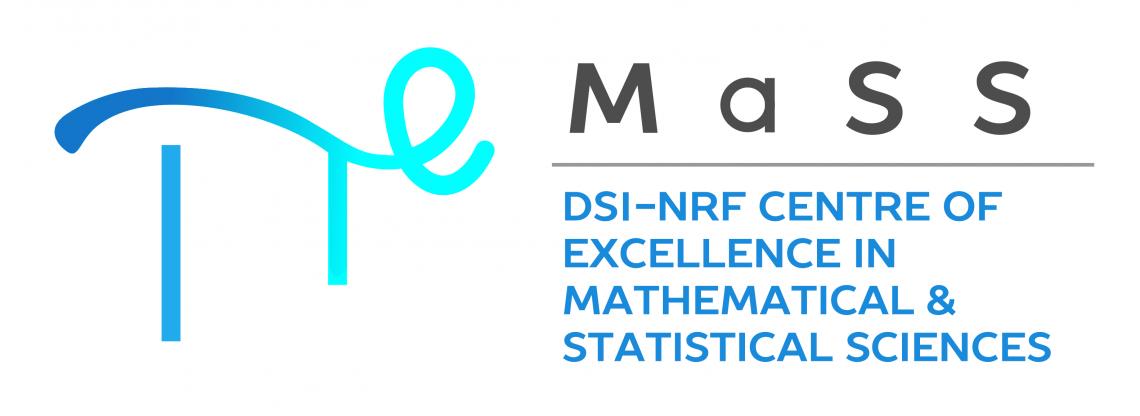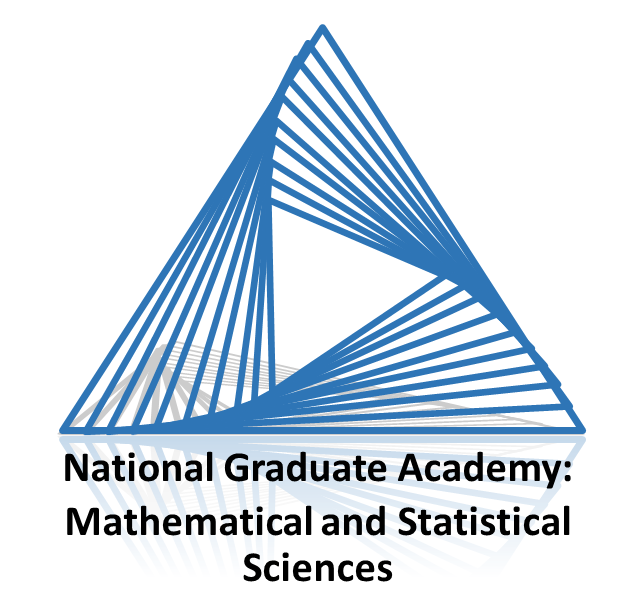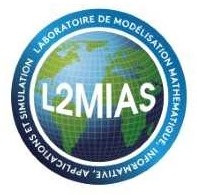3MC Presents:
African Mathematical School on Mathematical Modeling in Biology
20-28 March 2023, NWU, Potchefstroom
Partners
Sponsors

Disclaimer: Opinions expressed and conclusions arrived at are those of the author and are not necessarily to be attributed to the CoE-MaSS.


This school was supported by a grant from the IMU-CDC Conference Support Program, which is partially supported by the Abel Board.


Mini-Courses
Details of the mini-courses.
Mini-course 1: Prof Stephanie Portet
Lecture 01: Introduction to modelling
Basic modelling concepts will be introduced such as workflow of mathematical modelling, mathematical formalisms, and types of models.
Lecture 02: Qualitative analysis of ODE and discrete models
An overview of tools for qualitative analysis of dynamical systems, continuous or discrete in time, will be presented.
Lecture 03: Beyond mathematical analysis
An overview of parameter estimation (frequentist approach), confidence intervals with likelihood ratio statistics, sensitivity analysis methods will be presented.
Lecture 04: Use of collection of models and model selection
A powerful investigative tool in mathematical biology is to consider not a single mathematical model but a collection of models designed to explore different working hypotheses and select the best model in that collection. The use of collections of models will be motivated. Some procedures for model selection based on experimental data will be described. Rough derivation, practical technique of computation and use will be detailed.
Mini-course 2: Prof Michael Li
Abstract: This lecture will cover several important topics in both theoretical and practical side of mathematical modeling. Using disease modeling as an example, the relations between model outputs and data will be explained, which is crucially important for parameter estimations from fitting model outputs to data. We will further explain the concept of parameter identifiability and why it influences the reliability and accuracy of the model predictions. For the modeling COVID-19 and influenza epidemics, we will explain why standard epidemic models tend to over-project the real epidemics and how human behaviours can be incorporated into the standard models to improve the accuracy of the model projections. Another case study will be used to demonstrate modeling with data is an in-host model for quantifying the HIV-1 infection dynamics in the brain using clinical data. Through these lectures, Professor Li will share his experience on interdisciplinary collaborations with researchers in health and public health sciences and working with public health agencies during the COVID-19 pandemic. On the theoretical side of the modeling, we will explain the use of Lyapunov functions for establishing global stability of equilibria and the construction of Lyapunov functions for complex models in epidemiology and ecology.
Lecture 05: Epidemic models, epidemiological data, and parameter identification problem
Lecture 06: Building Lyapunov functions for complex models
Lecture 07: In-host models: modeling HIV-1/SIV-1 infection in brain with clinical data
Mini-course 3: Prof James Watmough
Abstract: Biological invasions, infections and disease outbreaks have many features in common: they each involve the spread of an invading pathogen or organism into an established community; the initial spread is plagued with false-starts and proceeds in fits and bumps; both the invader and the host community are structured and heterogeneous; and the host community's structure is dynamic, it may adapt to the invader, or it may collapse to an alternate stable state. The objective of these four lectures is to first introduce several classic ecological and in-host infection models using the simple stochastic-birth death process as a starting point, and then to introduce important modelling and analytical techniques along with model complexity. We examine the classic epidemic-threshold familiar from the SIR model in the context of both stochastic and deterministic ecological and in-host models. More complicated models of intra-guild predation and immune system dynamics are introduced in tandem to highlight their common features. Examples and tutorials will make use of the stochastic simulation (GillespieSSA) and differential equation packages available in R and julia.
Lecture 08: Simple birth-death processes and their associated deterministic models; an introduction to simple ecological, epidemiological and in-host models.
Lecture 09:Thresholds, dynamics and bifurcations; modelling immune system dynamics; intra-guild predation.
Lecture 10: Structured models; time-since-infection; multi-scale models.
Lecture 11: Spatial Ecology; invasions and spread.
Mini-course 4: Prof Julien Arino
All courses will involve a mix of modelling, mathematical and computational analysis, as well as considerations about data.
Lecture 12: The chemostat: an artificial ecosystem
A chemostat is an artificial ecosystem in which microorganisms (bacteria, phytoplankton) grow in idealised conditions. Chemostats have been the subject of much modelling work. I will present the general context as well as several well known models.
Lecture 13: Metapopulation models
Metapopulation models are spatial models that consider populations coupled through movement. I will present metapopulation models and their use in ecological and epidemiological applications.
Lecture 14: Continuous time Markov chains
Continuous time Markov chains (CTMC) are, in a sense, the stochastic equivalent of ordinary differential equations. I will introduce CTMC through several examples in ecology and epidemiology and will show how to analyse CTMC mathematically and computationally.
Mini-course 5: Prof Rachid Ouifki
Title: An introduction to mathematical modelling with delay differential equations
Lecture 15: A brief introduction to the theory of DDEs
Some results on the quantitative and (local) qualitative behavior of solutions of DDEs with emphasis on the similarities with ODEs
Lecture 16: Modeling with DDEs
We will discuss when, how and why we introduce delays in a mathematical model and along with the mathematical and biological implications of such introduction.
Lecture 17: Simulations of delay differential equations models using Matlab
Mini-course 6: Prof Leonard Santana
Title: Linear regression
Abstract: Linear regression is one of the most commonly used statistical analysis tools for modelling the conditional expected value of a random response variable given the values of a set of covariates. These lectures will introduce the basic concepts of linear regression and, specifically, emphasise the estimation of parameters in the model using ordinary least squares and maximum likelihood methods. The distributional properties of these estimators will also be explored; this then directly allows one to construct confidence intervals and hypothesis tests for the parameters of interest. Some time will also be set aside to consider the problem of model selection as well as the estimation of parameters using ridge regression and the LASSO, the latter of which lends itself to “automatic” model selection for linear regression models.
Lecture 18: Basics of linear regression: Models and estimation
In this lesson the concept of a statistical model is introduced and the linear regression model is discussed. Estimation of parameters with and without the additional assumption of normality of the error term will be considered and, consequently, the Gauss-Markov theorem will be introduced.
Lecture 19: Inference and shrinkage estimators
Here we will delve into the distributional properties of the estimators of the parameters of a linear regression model in order to ultimately construct confidence intervals and hypothesis tests. We will also look at shrinkage estimators (ridge regression and LASSO) as well as model selection.
Mini-course 7: Prof Jacek Banasiak
Title: Age-structured population models - from Fibonacci to McKendrick-von Foerster models
Abstract: The age structure of populations has a significant impact on their long-term development. We will provide a survey of population models ranging from the discrete to continuous time and age structure. Mathematically, we will consider the difference, ordinary and partial differential, as well as integral, equations. We shall present some methods of proving the well-posedness of the models and establishing their qualitative behaviour.
Lecture 20: Discrete models through Leslie matrices.
Lecture 21: Perron-Frobenius theory and applications.
Lecture 22: From Leslie matrices to McKendrick-von Foerster models.
Lecture 23: Epidemiological models with continuous age structure.


